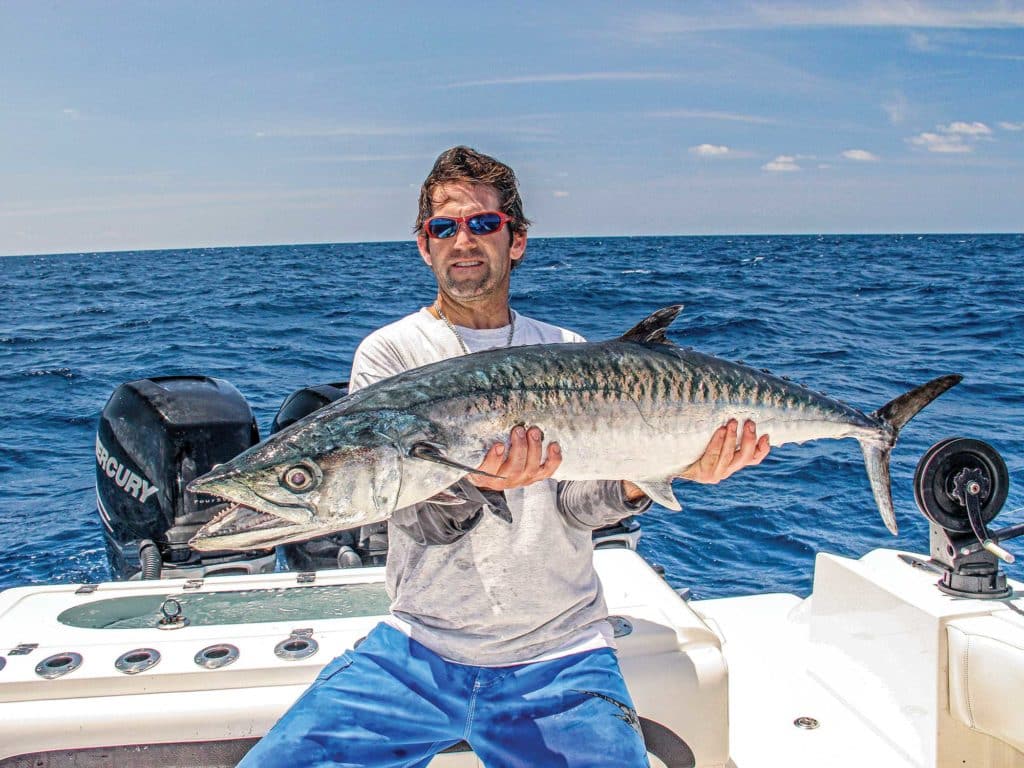
We’ve all seen it.
A guy pulling dead cigar minnows or drifting a couple of rigged mullet on single-nose hooks crosses paths with a giant kingfish. It happens, but does it happen dependably?
Though these somewhat accidental hookups occur from time to time, you have to bring your A-game if you really want to score. Serious kingfish competitors know that consistency is not found, it’s built through mindful preparation and prudent game planning. And integral to this strategy is the right gear in the right place.
“You have to use the best gear you can. Because if you have a tournament-winning kingfish on and a reel fails, you might as well not be out there,” says kingfish pro Ron Mitchell of Jupiter, Florida.
A decorated tournament pro and Southern Kingfish Association Hall of Famer, Mitchell knows that fooling giant “smoker” kings means overcoming a legendary wariness born of experience, enhanced by keen eyesight, and complicated by a slashing style that makes them really good at taking what they want.
A soup-to-nuts treatise would keep us here all day, so let’s outline the key elements and why you need them.
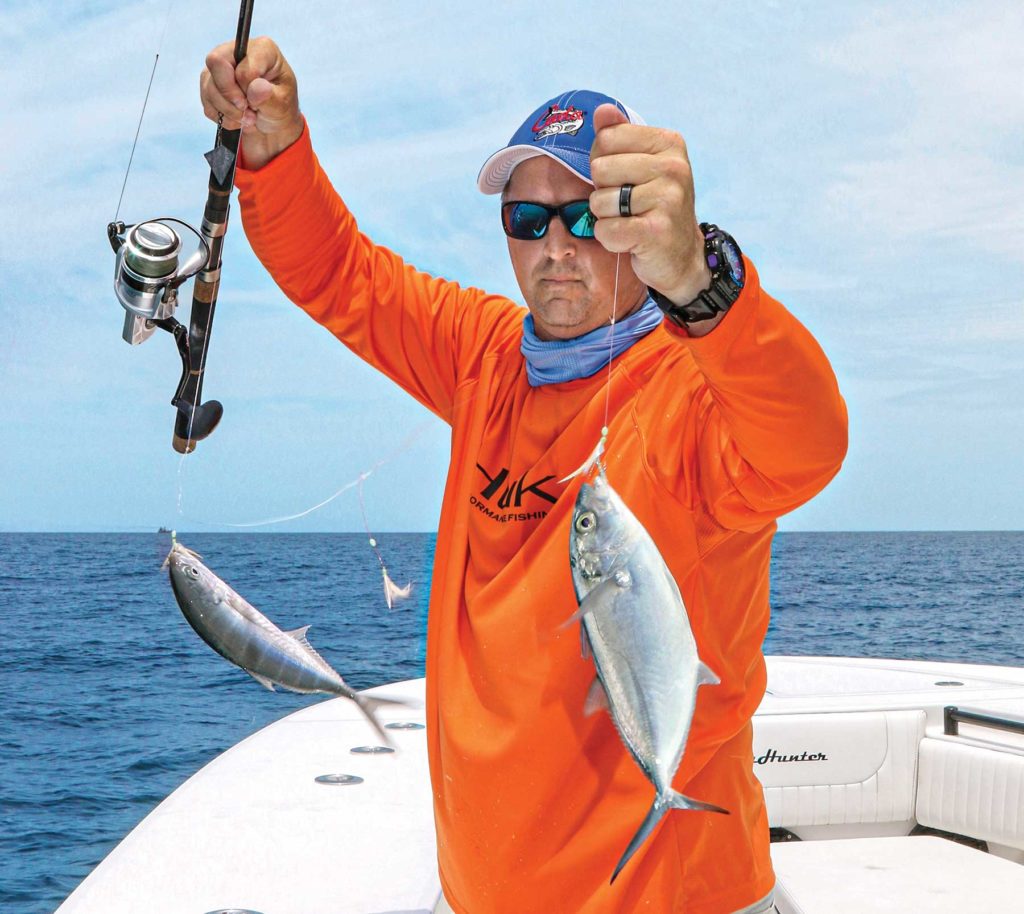
Keep Them Kickin’
Live bait is the fuel that runs the serious kingfish engine. Whether it’s mullet, menhaden (pogies or bunker), scaled sardines (whitebait or pilchards), threadfin herring (greenbacks), round scad (cigar minnows), bigeye scad (goggle-eyes), redtail scad (speedos) or blue runners (hardtails), the livelier the better.
Capt. Kevin Farner, who runs out of St. Petersburg, Florida, throws a cast net for mullet or menhaden. But the more delicate baits can be susceptible to bruising from the mesh and are best collected on sabiki rigs. Larger blue runners or bluefish will bite off or break most sabikis, so Farner suggests using Gotcha plugs, spoons or jigs to catch them, a common tactic around northern Gulf drilling rigs.
While cast nets will weaken baitfish, so will the human hand. Maximize bait life by using a hook-out tool for a no-touch transfer from bait rig to livewell. Avoid dropping these delicate baits into the well; instead lower them gently.
Same-day bait use is ideal, but many anglers will pre-catch their ammo and hold them in mesh bait pens to maximize their fishing time. Kept in areas with clean water flow and fed bits of shrimp and glass minnows, captured baitfish remain healthy and ready for action.
On the boat, Mitchell stresses the importance of high-capacity oxygen pumps and uses multiple wells to spread out his bait. Also, rounded interiors keep the baits moving naturally without bumping their noses in corners. And make sure to prevent overcrowding. It is better to head out with fewer healthy baits than a well full of half-dead specimens.
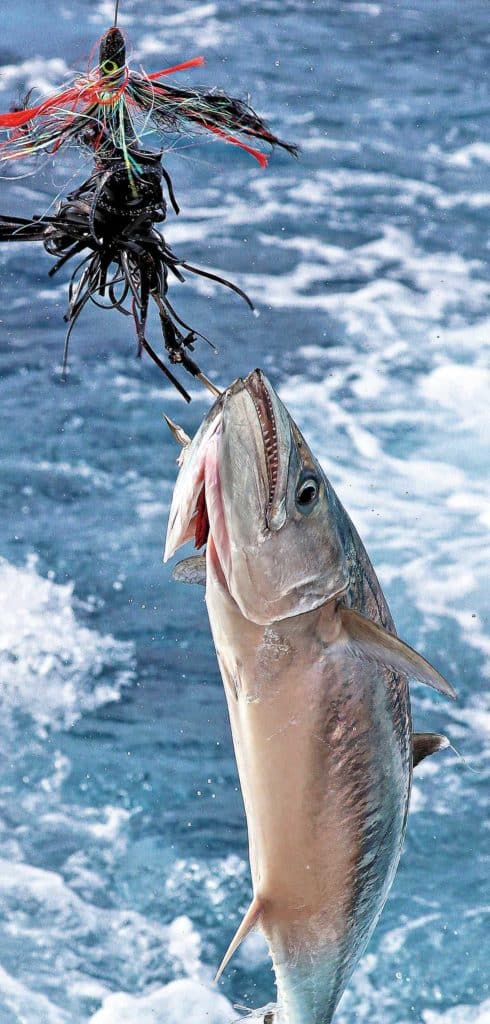
Appetizers
Kings respond aggressively to the sights and scents of feeding opportunities, so frozen chum blocks play a big role. Packed in a mesh sack hung from a stern cleat, the latter melts in the waves to release oil and ground baitfish bits.
Farner uses a larger laundry bag because it allows him to load multiple commercially made chum blocks or use his own. Placing a plastic bag inside a 5-gallon bucket, he’ll chop a variety of baitfish into a smelly mash, freeze it, and load the block into his laundry bag.
Complementing the boat’s in-deck or raised cooler, kingfish anglers need a quality portable cooler sized to fit under the leaning post against the transom or forward of the console. Separate from the lunch and beverage cooler, this one holds chum blocks and frozen ribbonfish—a strategic accompaniment to the liveys.
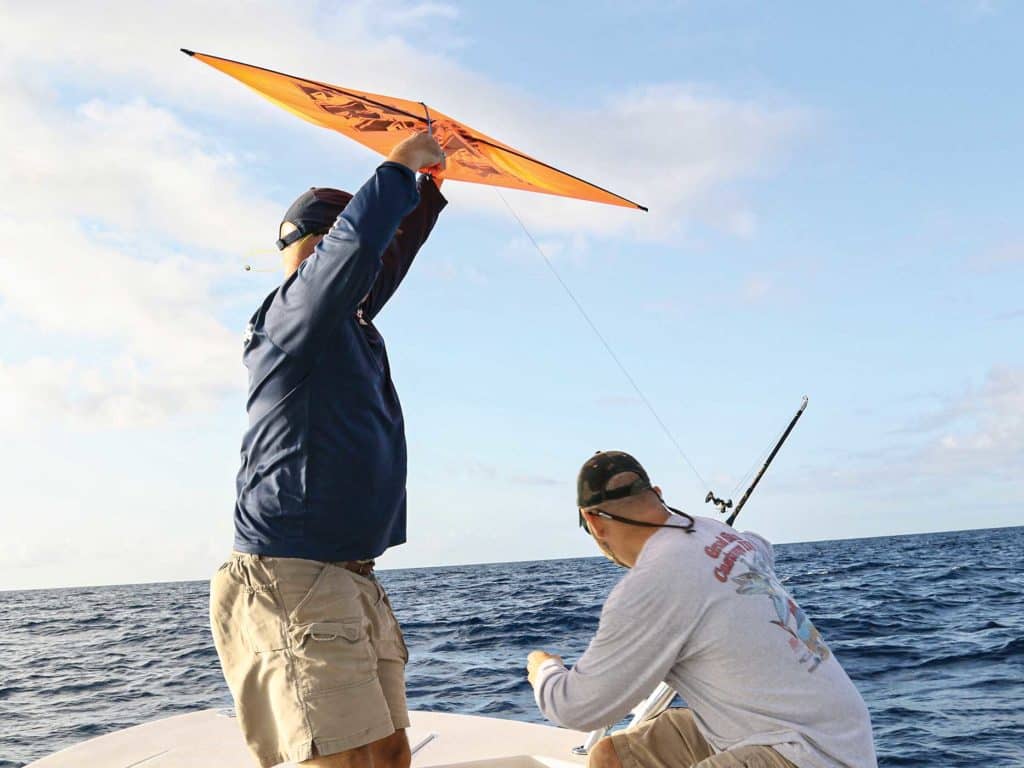
Sting the King
Given this predator’s strategy of slashing through prey at top speed, kings often miss single-hook rigs and make short work of monofilament line. Wire leaders repel those sharp teeth, while stinger rigs—a single lead hook with a trailing treble linked by a wire segment—snare kings no matter where they bite.
Bait size, water clarity and sea conditions require an array of stinger rigs.
Read Next: Tips for Catching Kingfish: The Right Boat
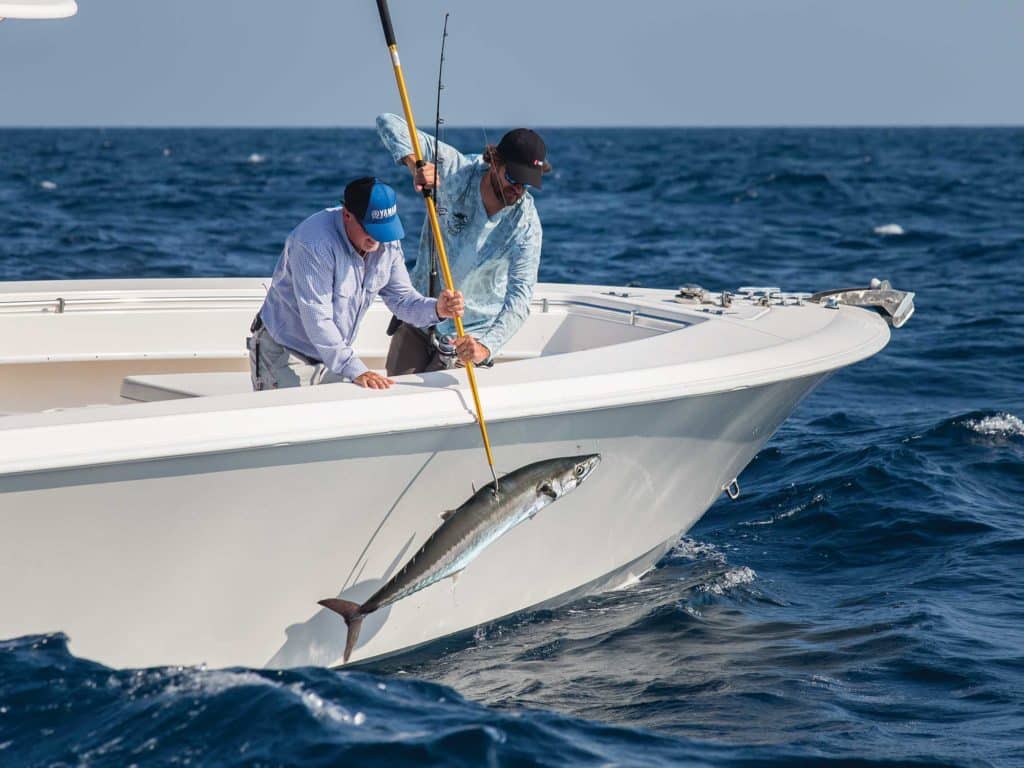
Live-Bait Alternative: Hardware for Kings
Live bait is the go-to for smoker kings. But small to midsize fish regularly fall for artificial lures. And there’s nothing saying you won’t connect with a monster when slinging hardware. Plus, artificials are a great way to cover water, allowing you to troll at faster speeds. Trolling plugs, spoons, skirted lures and topwaters are all proven kingfish lures.
- LB Huntington Drone: Towing this spoon behind a weighted planer is a tried-and-true king-getter.
- Yo-Zuri 3D Magnum Deep Diver: Big-billed divers allow you to target specific depths.
- Nomad Designs Madscad: You need a tough plug to tangle with powerful predators like kings.









